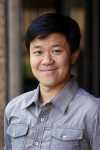13 May Basic Research Of Ovarian Development May Lead To Understanding Of Ovarian Disorders
 MedicalResearch.com Interview with:
MedicalResearch.com Interview with:
Humphrey Yao, Ph.D.
Lead Researcher
Reproductive and Developmental Biology Laboratory
National Institute of Environmental Health Sciences (NIEHS)
National Institutes of Health (NIH)
Research Triangle Park, North Carolina
Medical Research: What is the background for this study? What are the main findings?
Dr. Yao: We wanted to understand how an organ forms, and what basic cell types were needed to form an organ. So, we used a mouse ovary model system to understand the process. The functional unit of the ovary is called the follicle, and it is made up of three types of cells — the maturing egg, granulosa cells, and theca cells. Scientists knew where the egg and the granulosa cells came from, but no one knew where theca cells came from. Theca cells are important, because they allow females to produce the hormones that sustain follicle growth. Researchers also lacked information about how the egg, granulosa cells, and theca cells talked to each other to promote growth and maintain a healthy ovary.
We made two discoveries. First, we answered the long-standing question of theca cell origin by determining that they have two sources, both inside and outside of the ovary. We don’t yet know why theca cells have two sources.
Second, we uncovered the molecular signaling system that the egg, granulosa cells, and theca cells use to communicate. We didn’t expect to find this three-way cellular crosstalk, but now that we know how they signal each other, I believe we are closer to understanding how an ovary develops and what happens when something goes wrong. Ovarian disorders, such as premature ovarian failure and polycystic ovarian syndrome, may start when cellular communication is altered or if the various cells fail to develop properly.
Medical Research: What should clinicians and patients take away from your report?
Dr. Yao: They should know that basic research using animal models provides invaluable information that could be used to understand human biology and diseases.
Medical Research: What recommendations do you have for future research as a result of this study?
Dr. Yao: Future research should examine the two cell types that make up theca cells more closely, and it should determine if the same holds true for humans.
In addition, researchers could investigate whether miscommunication or defects in the crosstalk among the three ovarian cell types could contribute to ovarian disorders in humans. Doing so may uncover additional roles that theca cells play in female fertility.
Citation:
Chang Liu, Jia Peng, Martin M. Matzuk & Humphrey H.-C. Yao
Nature Communications 6, Article number: 6934 doi:10.1038/ncomms7934
Received 29 September 2014 Accepted16 March 2015 Published 28 April 2015
[wysija_form id=”3″]
MedicalResearch.com Interview with: Humphrey Yao, Ph.D. (2015). Basic Research Of Ovarian Development May Lead To Understanding Of Ovarian Disorders
Last Updated on May 13, 2015 by Marie Benz MD FAAD
